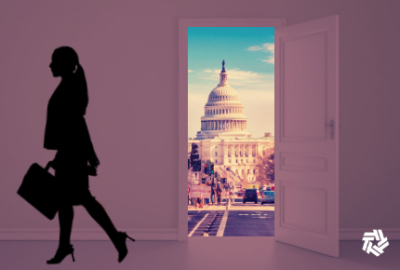Is your agency’s workforce reentry clock ticking?
Some agencies have indicated they might begin to bring more employees back to the office after the holidays.
If those plans hold, it’ll be here before you know it. And some are more impatient than others.
More than 40 senators (all Republicans) wrote to the Biden administration earlier this month, requesting “immediate action” to transition federal employees back to in-person operations.
They said their offices have been inundated with calls from constituents who say they’re struggling to access government services. Social Security field and local offices, which have been largely closed since last March, seem to bear the bulk of the — often bipartisan — complaints.
The senators named a wide variety of concerns. They wanted to know whether all agencies had complied with a July deadline for submitting reentry plans to the Office of Management and Budget for review. They apparently asked 20 agencies for their plans, and only one pointed to an outline on its website.
“We understand the unique challenges that COVID-19 has presented, but Americans continue to face unprecedented delays in accessing their federal government,” the senators wrote. “This is unacceptable, particularly since agency heads have had the ability to address productivity since June 2021, when the Biden administration lifted its 25% cap on the number of federal employees allowed to report to worksites.”
A few of these senators have taken a step further in introducing legislation called the Having Employees Return to Duty (HERD) Act. The bill would require federal employees, except those at the Defense Department, to return to the duty stations and schedules they were working before the pandemic.
It’s worth noting, this bill probably isn’t going too far. Congress has an incredibly long to-do list and little time to tackle the items on that list, which includes funding the government, passing an annual defense authorization bill and finding a way to raise or suspend the debt ceiling.
The Senate has to figure out what it’s going to do with the House-passed Build Back Better Act.
I heard from a few readers on Twitter who said they were offended by the name of the bill. Yes, the acrostic spells out the word “herd,” and I’ll leave to you to draw your own conclusions and opinions about that.
But it’s pretty clear that bringing all federal employees back into their offices in one fell-swoop isn’t the strategy the Biden administration is deploying.
We’ve heard a few agencies name tentative reentry dates in early January after the new year, dates at which point they might start bringing more employees back to their offices with more frequency. These agencies, which include GSA, the Social Security Administration and the Agriculture Department, have all said telework will remain a prominent part of the workplace.
They’ve mentioned Jan. 3 and Jan. 4 dates as points where reentry might begin, and that’s if the pandemic doesn’t swing those decisions in another direction.
All of this brings us back to you. If you have a possible reentry date looming, maybe sometime soon after the holidays, how are you feeling about it?
Office of Personnel Management Director Kiran Ahuja said recently she sensed some anxiety among retirement-eligible feds who have been teleworking for the last 20 months or so.
“If anything what we’re seeing, potentially, around an uptick in attrition is actually related to people who have delayed their retirement, maybe in the height of the pandemic, who are now seeing that we are going back to a hybrid workspace and require some in-person, and they’re [thinking], ‘Nah, you know I’m close to retirement. I don’t really want to go back to the commute,'” she said last week at an FCW workforce summit.
Pam Coleman, the associate director of performance and personnel management for OMB, also noted some movement among federal employees, again, related to an upcoming office reentry.
“We’re not talking about snapback, but if I’ve been on maximum telework — not even a day in the pay period in the office — and I start to think about having to come back, I would imagine, and I know, there are folks [for whom] that’s not what they want to do, or they still feel unsure or unclear about a future that doesn’t include maximum telework,” she said. “That’s a perfectly legitimate choice to make.”
All of this tracks with what feds told us earlier this year about their retirement plans.
So far retirements have been trending higher in 2021, at least compared with the previous year. We might not see a huge exodus — predictions about the “retirement tsunami” are often wrong or overblown — but the real test will come in January, often the most popular month to retire.
But stay tuned. And if you’re planning to retire in the coming months, feel free to tell us about what’s driving your big exit.
Nearly Useless Factoid
By Alazar Moges
Explorer Ferdinand Magellan named the Pacific Ocean in the 16th Century. In 1519, the Portuguese navigator, in the employ of Spain, began a journey across the Atlantic Ocean to seek a western route to the Spice Islands via South America.
Source: NOAA
Copyright
© 2024 Federal News Network. All rights reserved. This website is not intended for users located within the European Economic Area.






